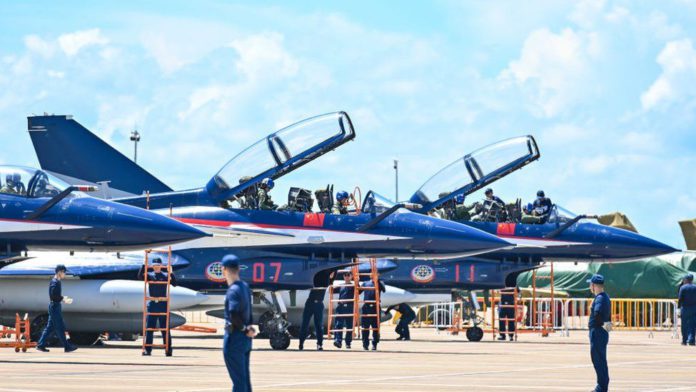Canadian military aircraft operating in Asia have been repeatedly “buzzed” by Chinese jets at dangerously close distances, Ottawa says.
Canada says that its aircrews have had to alter their path to avoid collisions while operating in international airspace near North Korea.
It has called the Chinese behaviour unprofessional and potentially risky.
China has not commented on the incidents, which Canada says are being addressed diplomatically.
Canadian Prime Minister Justin Trudeau said he took the situation “very seriously” and had ordered officials to raise it with their Chinese counterparts.
“The fact that China would have chosen to do this is extremely troubling,” he said, according to Reuters news agency.
In a statement, Canadian armed forces media relations chief Dan Le Bouthillier said that the incidents took place during Operation Neon, Canada’s contribution to the implementation of United Nations sanctions against North Korea.
The Canadian aircraft involved – CP-140 Aurora maritime patrol aircraft – were operating from Kadena air base in Japan between 26 April and 26 May.
Mr Le Bouthillier added that in some instances, Canadian aircrew felt “sufficiently at risk” to quickly modify their own flight paths to avoid potential collisions. Chinese aircraft were reportedly close enough that their crews were “very clearly visible”.
While it is unclear when the buzzing incidents took place, Mr Le Bouthillier said that they are increasingly frequent.
The BBC has reached out to the Chinese government for comment.
Similar Chinese behaviour has been reported in the past by Canadian, US and other allied aircraft and vessels operating in the Pacific.
In 2017, for example, Chinese jets came within 150 feet (45 metres) of a US aircraft, a move that the US Air Force called “unprofessional”.
Two years later, two Chinese fighters flew 1,000 feet (300 metres) past a Canadian warship.
A state-owned Chinese newspaper later described the incident as a “warm welcome” for the Canadian forces by China’s navy and air force.
“In these interactions, PLAAF [People’s Liberation Army Air Force] aircraft did not adhere to international air safety norms,” Mr Le Bouthillier said.
“These interactions are unprofessional and/or put the safety of our RCAF [Royal Canadian Air Force] personnel at risk.”

